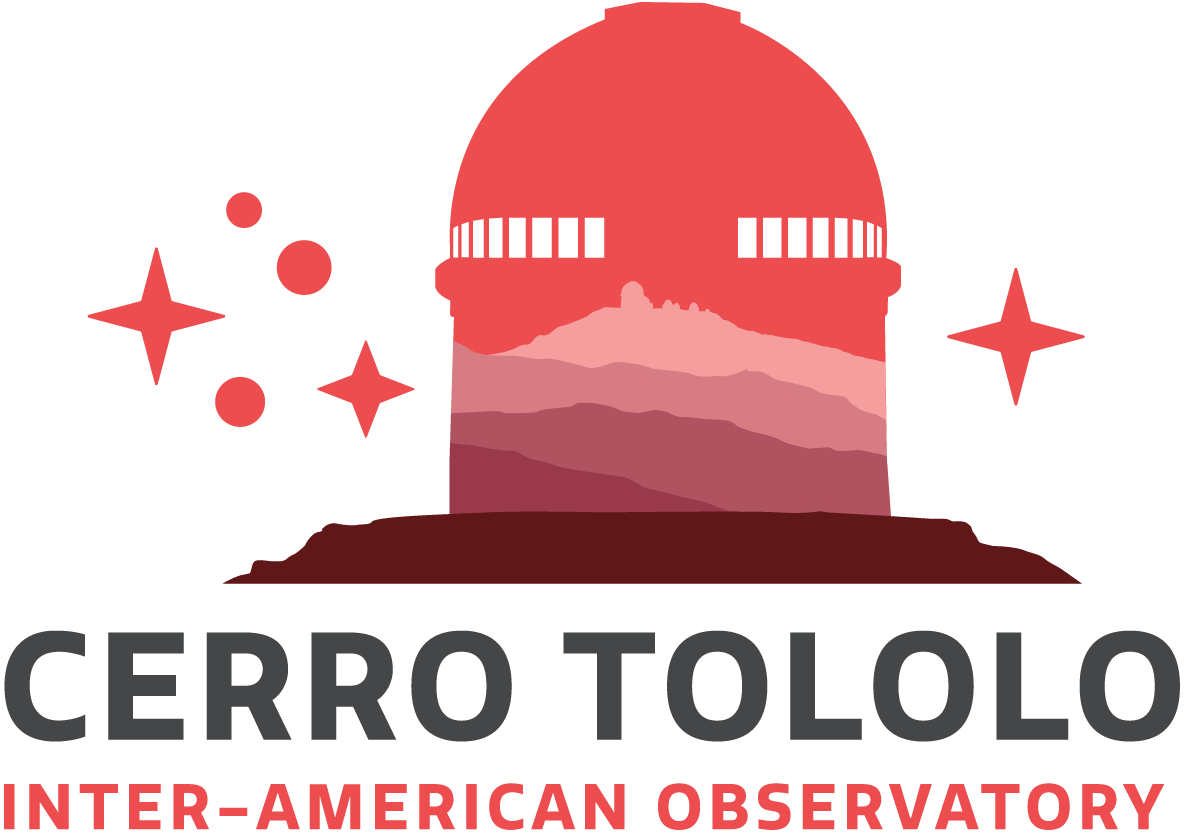SOAR Telescope First to Observe and Measure Distance to Massive Explosion
12 September 2005
Fulfilling one of its central operational goals in a big way, the SOuthern Astrophysical Research Telescope (SOAR) on Cerro Pachón in Chile made the first observations of the glowing remains of the most distant explosion ever seen in the Universe. The international telescope then provided the first accurate measurement of just how incredibly far away this explosion appears to be.
A network of observers led by Daniel Reichart and his team from the University of North Carolina at Chapel Hill (UNC) used the OSIRIS infrared instrument on the SOAR telescope to detect the afterglow of the gamma-ray burst, just three hours after NASA’s SWIFT spacecraft discovered the burst using its gamma-ray and X-ray output.
This powerful burst, marking the death of a massive star and the birth of a black hole, was detected on September 4. It comes from an era soon after stars and galaxies first formed, about 500 million to 1 billion years after the Big Bang. Named GRB 050904, the object has a redshift of 6.29, which translates to a distance of about 13 billion light years from Earth. (The Universe is thought to be 13.7 billion years old.) The previous most distant gamma-ray burst had a redshift of 4.5. GRB 050904 was also very long in duration, lasting over 200 seconds; most bursts last only about 10 seconds.
Reichart is also the director of a new array of six small automated telescopes at nearby Cerro Tololo Inter-American Observatory in Chile, called the Panchromatic Robotic Optical Monitoring and Polarimetry Telescopes (PROMPT). Funded partly by the National Science Foundation, PROMPT is optimized to observe gamma-ray bursts in six different colors, and is only just entering science operations. PROMPT was not able to see the new burst, confirming the idea that the object was either deeply enshrouded in dust or that most of its light was shifted to longer, infrared wavelengths due its very high redshift.
“This is when we got really excited, because this is exactly the sort of signature that you are hoping to see if you are looking for very distant objects,” Reichart said.
Subsequent observations with SOAR and PROMPT ruled out the dust interpretation. Measurements of the redshift of the object with SOAR using photometric techniques suggested a value of 6 plus or minus 0.5, very close to the later value determined with spectroscopic techniques.
The data from SOAR were first analyzed by UNC undergraduate Josh Haislip, who will be first author on the pending research publication. UNC graduate student Melissa Nysewander played a key supporting role, as did undergrads Chelsea MacLeod and Justin Kirschbrown.
“SOAR is a new telescope that is still in the advanced commissioning phase. The instrument that we used, OSIRIS, was just put on the telescope and made available for science observations a few weeks before this event,” Reichart said. “In fact, I had asked Josh to do some extra research on the instrument to be prepared just in case, since my more senior students were away at a gamma-ray burst workshop! He and the other students on the team did an excellent job, and are now well-prepared to work on future bursts with SOAR and PROMPT.”
OSIRIS (the Ohio State InfraRed Imager/Spectrometer) is a multi-purpose infrared imager and spectrometer built by the Ohio State University. It is currently deployed at the 4.1-meter SOAR telescope as a facility infrared instrument. For the gamma-ray burst observations, OSIRIS was used in imaging mode, where its relatively wide field of view was helpful in looking for nearby stars of known brightness to help calibrate the brightness of the new afterglow.
The observations at SOAR were made by Eduardo Cypriano and Elysandra Figueredo of Brazil, working from the telescope’s remote observing room about a two hour-drive away in La Serena, Chile. They were connected by videoconference to the SOAR telescope operators on Cerro Pachón and to the collaborators at UNC.
“One of the design requirements for SOAR is that it should be able to respond quickly to gamma-ray bursts, and then use the expertise of remote observers and the excellent clear skies of the telescope site in Chile to find their optical afterglows,” explained SOAR Project Director Steve Heathcote. “The discovery of the extreme distance of this gamma-ray burst is a gratifying confirmation of the possibilities opened up by this mode of operation.”
More information
Dedicated in April 2004, the 4.1-meter SOAR telescope is funded by the U.S. National Optical Astronomy Observatory (through the National Science Foundation), the Ministry of Science of Brazil, Michigan State University and UNC.
For more information on SOAR and an image of the telescope, see above and the SOAR Web site.
Based in Tucson, AZ, the National Optical Astronomy Observatory is operated by the Association of Universities for Research in Astronomy (AURA) Inc., under a cooperative agreement with the National Science Foundation.
Links
- Animation and still graphics related to this discovery are scheduled to be posted on the NASA Web site.
Contacts
Douglas Isbell
Office of Public Affairs and Educational Outreach National Optical Astronomy Observatory
Tel: 520/318-8230
Email: disbell@noao.edu
Deb Saine
UNC-Chapel Hill News Services
Tel: 919-962-8415
Email: deborahs@dev.unc.edu
About the Release
| Release No.: | noao0509 |
| Legacy ID: | NOAO 05-09 |
| Name: | GRB 050904 |
| Facility: | PROMPT-1, SOAR Telescope |
| Science data: | 2006Natur.440..181H |



